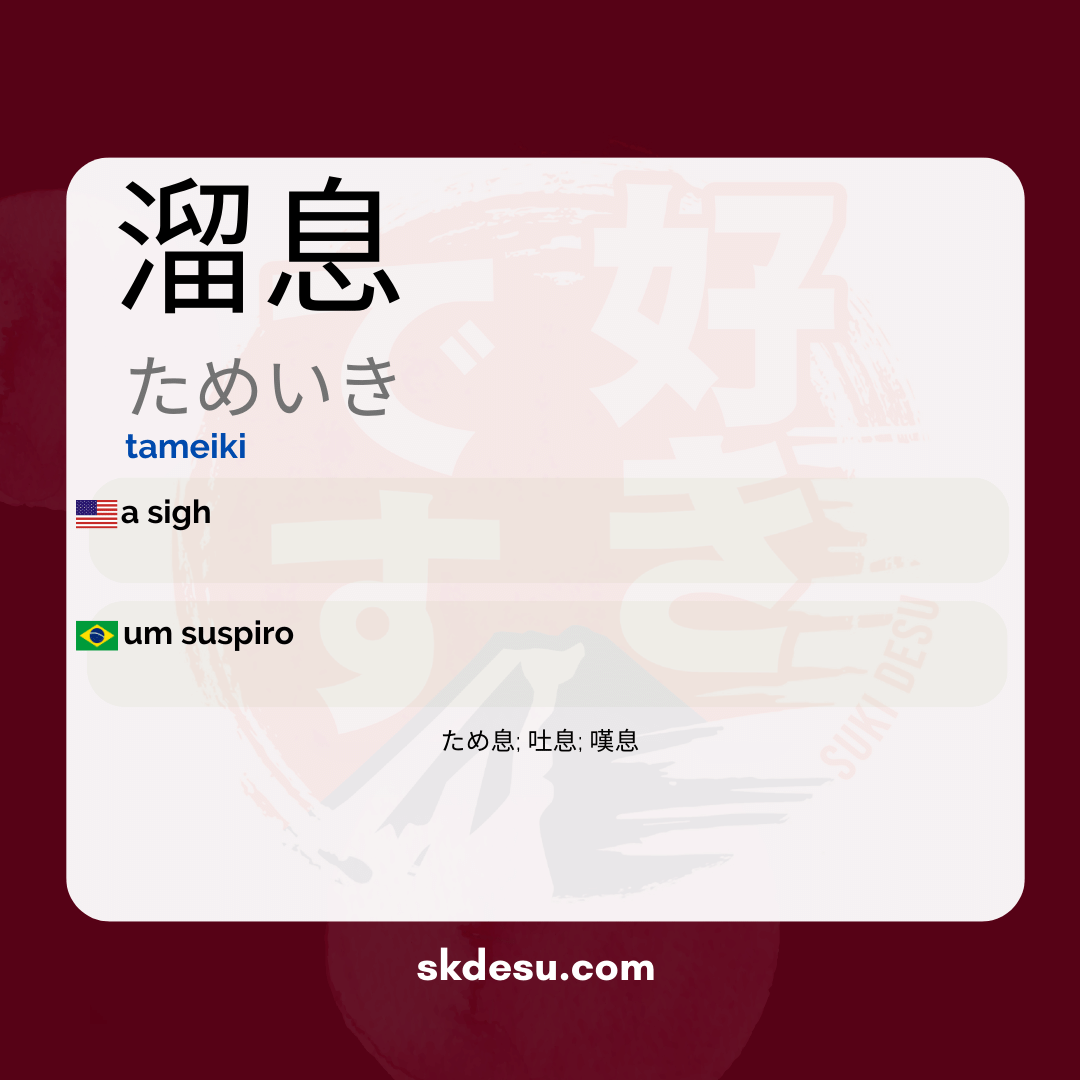Translation and Meaning of: 溜息 - tameiki
If you have ever watched an anime or Japanese drama, you have probably heard someone let out a 溜息 (ためいき) in scenes of frustration, relief, or exhaustion. This word, which means "sigh," carries fascinating cultural and linguistic nuances in Japan. In this article, we will explore its meaning, origin, and how it is used in daily Japanese life, as well as tips for memorizing it effectively.
Meaning and origin of 溜息 (ためいき)
The word 溜息 is composed of two kanji: 溜 (tame), which suggests something accumulated or repressed, and 息 (iki), which means "breath." Together, they form the idea of a sigh that releases contained emotions, whether relief, sadness, or exhaustion. Unlike Portuguese, where "suspiro" can have romantic connotations, in Japanese the term is more associated with repressed feelings.
Interestingly, kanji isn't the most common writing system used in daily life. Many Japanese people choose to use only hiragana (ためいき) in informal texts, while the kanji version appears in more formal or literary written materials. This flexibility makes the word accessible for beginner Japanese students.
Cultural usage and frequency in everyday life
In Japan, letting out a ためいき in public is not seen as rude, but it can convey disheartenment or frustration. In work environments, for instance, an audible sigh may be interpreted as dissatisfaction, so many people suppress it in professional situations. Among friends or family, however, it is common and even expected during moments of fatigue.
The word frequently appears in mangas, animes, and dramas, especially in scenes where a character is overwhelmed. In Your Lie in April, for example, the protagonist Miyazono Kaori lets out several ためいき while dealing with her conflicting emotions. This media usage reinforces its association with emotional vulnerability.
Tips for memorizing 溜息 (ためいき)
An effective way to solidify the word is to associate it with everyday situations. Think of moments when you sighed deeply — after a stressful day or while solving a difficult problem. This emotional connection helps to naturally imprint the term.
Another tip is to observe the kanji 息 (breath), which also appears in words like 休息 (kyūsoku - rest) and 息子 (musuko - son). Creating these mental connections facilitates the learning not only of ためいき (tameiki - sigh), but also of other related vocabulary. Repeating the word out loud, mimicking the sound of a sigh, can also be a useful technique.
Vocabulary
Expand your vocabulary with related words:
Synonyms and similar words
- ため息 (tameiki) - Sigh, often associated with a feeling of fatigue or discouragement.
- 吐息 (toiki) - Sigh, more related to a deep breath that can express relief or exhaustion.
- 嘆息 (tanseki) - Sigh, generally associated with a feeling of lament or deep sadness.
Related words
Romaji: tameiki
Kana: ためいき
Type: noun
L: jlpt-n2
Translation / Meaning: a sigh
Meaning in English: a sigh
Definition: Deeply sigh to express sadness, irritation, etc.
Quick Access
- Vocabulary
- Writing
- Sentences
How to Write in Japanese - (溜息) tameiki
See below a step-by-step guide on how to write the word by hand in Japanese. (溜息) tameiki:
Example Sentences - (溜息) tameiki
See below some example sentences:
Tameiki wo tsuku
Sigh.
- 溜息 - "suspiro"
- を - direct object particle
- つく - "give a sigh"
Other Words of this Type: noun
See other words from our dictionary that are also: noun

